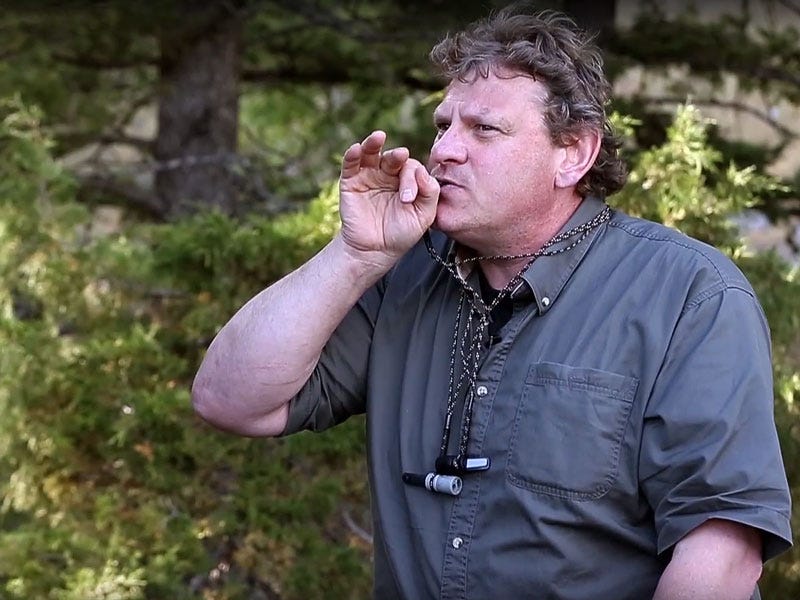How to Use a Diaphragm Cow Elk Call with Dieter Kaboth

In this video, four-time world-champion elk caller Deiter Kaboth says, “An elk wants to breed a cow during the archery season and they are coming into those cows because they want a bunch of girlfriends.”
That urge is your ticket to harvesting a bull this season and Kaboth tells you exactly when to use certain calls to mimic nervous elk, and when to use others to calm the herd. If you do it right, you may be able to work right into the herd and put an arrow in a bull. So tune in and learn how to use a diaphragm cow elk call to your best advantage. Right now is the time to practice so you speak fluent cow elk by the time September arrives.
Hi, I'm Dieter Kaboth, and I've been very fortunate to win four world elk calling championships with the Rocky Mountain Elk Foundation. You know, part of the championships is not only just the bugling, but it's also in the cow calls. To me, this is the bread and butter of calling elk, and really calling in elk to you. After all, an elk wants to breed a cow, during the archery season, and they're coming in to those cows because they want a bunch of girlfriends. So I'm gonna share with you how to use cow calls to your advantage in calling elk and how to be a little bit more proficient.
Now an elk bugle, if you saw another video that we have out here, goes from a low tone to a high tone. A cow call is just the opposite. It starts at the high tone and comes back down to the low tone. And this sound's gonna sound. So what I'm gonna do with the diaphragm is I'm gonna place it on the roof of my mouth and I'm gonna press hard with my tongue to make a high note, and then I'm gonna slowly back off, and this is how that's gonna sound.
That sounds pretty good, right? But there's some things we can do to add some realism to the call. One thing that we can do is we just, by the way we move our lips, you can make it actually sound like you're two different elk. So for instance, I'm gonna bring my lips to an O. It'll sound like a more mature elk. If I smile and hold that smile as I'm calling, it'll sound like a calf. Listen to what I'm doing.
Sounds a lot more realistic, doesn't it? Now if I add a tube to it, now I sound like four elk. Now, if I do this ... now I sound like a whole herd of elk. I sound like a buffet of girlfriends, you might say, and one to call that bull elk to me because he's looking for a bunch of girlfriends. Cow calling is very, very effective, and I've called a lot of bulls in that have been on my plate because of cow calls. Don't be afraid to use them.
Now when you're using a cow call, cows make a couple of different types of sounds that you might hear, but I want you to understand what you're hearing. When you hear a sound like this ... what I call a chirp, really to me, that's an anxiety type of a call, and why is that important to know? Because if elk are making that type of a sound up here, I want those elk to think I am at the same anxiety level that they are. They're nervous about something. I want them to think that I'm nervous as well. So if I hear that, I'm gonna go ... but after a couple of minutes, what I'm gonna do is I'm gonna add some long, drawn-out calls. When you hear this call, that means the herd's more relaxed. Everything's fine within the herd's structure, and everything's relaxed. So this is how that's gonna sound. If I hear a group of elk making those short, chirpy sounds, this is how I'm gonna tend to relax those elk before I just rush in at them.
Do that a few times and you're gonna find that you'll relax the herd, and then when you move in on them, they'll be in a more relaxed state and maybe not so anxious where they're gonna blow out on you.
